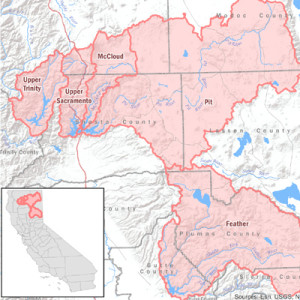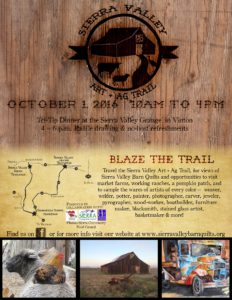Sierra Nevada Conservancy
FUNDING OPPORTUNITIES NEWSLETTER
October-November 2016
Have you missed the Urban Streams Restoration Program? This Department of Water Resources grant provides funding to reduce flooding and erosion, restore or protect the natural ecological values of streams, and promote community involvement and stewardship. The last round of funding was in 2014 and some of us have been waiting for another round of funding to be released. It looks like that will not happen until 2018, but the good news is that starting in 2017 program staff will make themselves available to provide technical assistance to help communities plan their projects and prepare for successful grant applications. Keep an eye on the Urban Streams Restoration Program web site for upcoming information about this assistance program.
Upcoming grants that might be of interest:
- State Water Resources Control Board Nonpoint Source Program and Timber Regulation and Forest Restoration Fund grants (pre-proposals due October 10) are two programs that are implemented together. The Nonpoint Source Program grants must address water quality issues according to preferences listed in the guidelines. Timber Fund grants must implement forest management measures which can demonstrate water quality improvements such as erosion control, road management, riparian restoration, and post-fire rehabilitation.
- The Max and Victoria Dreyfus Foundation (due November 10) provides modest funding to support museums; cultural and performing arts programs; schools; educational and skills training programs; programs for youth; environmental and wildlife protection activities; and other community-based organizations and their programs.
- The ‘Developing the Next Generation of Conservationists’ Grant Program (due November 17) provides support for innovative job opportunities that expose young people, particularly urban and underserved youth, to the natural world and career opportunities in conservation.
- Joint Fire Science Program Funding Opportunities (due November 17) include funding for research on wildfire management, landscape fuel treatments, post-fire recovery, and other fire science areas.
- National Fish and Wildlife Foundation Environmental Solutions for Communities Grants (due December 10) fund highly-visible projects that link economic development and community well-being to the stewardship and health of the environment.
And keep your eye out for these soon-to-be-released opportunities:
- The Federal Lands Access Program funds improvements to roads and other transportation facilities (bridges, trails, bicycle and pedestrian facilities, etc.) that provide access to federal lands with high recreation use or economic benefits. Eligible activities include work on parking areas and trailheads, provisions for pedestrians and bicycles, mitigation measures to reduce wildlife mortality while maintaining habitat connectivity, roadside rest areas, etc. A new ‘call for projects’ is scheduled for January 2017.
- As part of the Cooperative Watershed Management Program, the Bureau of Reclamation WaterSMART Program will provide grant funding for on‑the‑ground watershed management projects. These will be follow-ups to the previous grants that helped establish or develop watershed groups. Draft evaluation criteria for this round of funding should be released soon.
New Capacity Building and Community Development Grant Research Memo
The Sierra Nevada Conservancy (SNC) Funding Team makes it easy for you to find grant opportunities. We research and compile funding sources for various types of projects. You can find these memos on the Funding Opportunities Web Page. Each memo is updated at least once per year. The latest research memo focuses on funding for Capacity Building and Community Development. Recently updated research memos include Riparian, Wetland, and Aquatic Habitat Restoration, and Habitat Preservation funding.
Congratulations to the Sierra Streams Institute on their award of almost $100,000 from the Bureau of Reclamation’s WaterSMART Program for further development of the Bear River Watershed Group.
Your SNC Area Representative can help you set up an individual consultation with the SNC Funding Team to get advice about specific funding opportunities or general fund development strategies. To take advantage of this resource, contact your Area Representative.
Grant Writing Workshops are available to help build the capacity of organizations that serve the Sierra Nevada Region. If you are interested in organizing or attending a workshop, contact your Area Representative.


